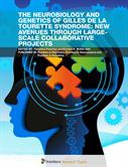Explore

The Neurobiology and Genetics of Gilles de la Tourette Syndrome: New Avenues Through Large-Scale Collaborative Projects
Peristera Paschou and Kirsten R. Müller-Vahl
2018
0 Ungluers have
Faved this Work
Login to Fave
Gilles de la Tourette Syndrome (TS) is a common, albeit severely under-diagnosed, neuropsychiatric disorder that is caused by a complex genetic basis, interacting with environmental factors. High comorbidity rates with other neurodevelopmental disorders such as attention deficit/hyperactivity disorder and obsessive compulsive disorder raise the intriguing hypothesis of a shared etiological background. Abnormalities of corticostriatal-thalamic-cortical circuits (CSTC) and dysfunction of both dopamine and serotonin neurotransmitter systems are assumed to be associated with TS. Recently, multiple lines of evidence also point towards an important role of additional neurotransmitters such as histamine and glutamate. For a very long time, efforts to elucidate the etiology and pathophysiology of TS have been fragmented and hampered by low statistical power. Finally, after more than two decades of active research aiming to identify the etiology and pathophysiology of TS, we are on the verge of a new era, promising exciting and rapid discoveries in the field. Investigators from around the world, representing multiple disciplines and scientific approaches, are joining their efforts in large-scale initiatives supported both by European Union and US National funding agencies, such as the European-funded EMTICS, TACTICS, and TSGeneSEE consortia, the Marie Curie Initial Training Network TS-EUROTRAIN and the European Society for the Study of TS joining forces with the NIH-funded TSAICG, GGRI, and Tic Genetics consortia. Importantly, all these initiatives are supported by TS patient support and advocacy groups. Multiple resources are being consolidated and coming together to serve the study of TS, including large well-characterized patient cohorts, and specialized epidemiological databases, such as the unique resource of the Netherlands Twin Register. This research topic showcases current large-scale collaborative efforts aiming to elucidate the genetic and neurobiological background of TS, through diverse approaches; from genomewide association studies aiming to identify common variants associated to the disorder to neuroimaging studies and animal models. Furthermore, current approaches on the clinical assessment and management of the disorder are presented. Propelled by the gradual availability of large scale TS cohorts, novel methodologies, and importantly, sheer enthusiasm by multiple researchers working together across different countries, the new era of the neurobiology of TS holds the promise to identify novel targets for improved therapies.
This book is included in DOAB.
Why read this book? Have your say.
You must be logged in to comment.
Rights Information
Are you the author or publisher of this work? If so, you can claim it as yours by registering as an Unglue.it rights holder.Downloads
This work has been downloaded 569 times via unglue.it ebook links.
- 185 - mobi (CC BY) at Unglue.it.
- 255 - epub (CC BY) at Unglue.it.
- 129 - pdf (CC BY) at Unglue.it.
Keywords
- clinical research
- Collaborative studies
- Genetics
- Gilles de la Tourette syndrome
- medicine
- Neurobiology
- Treatment
Links
DOI: 10.3389/978-2-88945-323-8Editions

